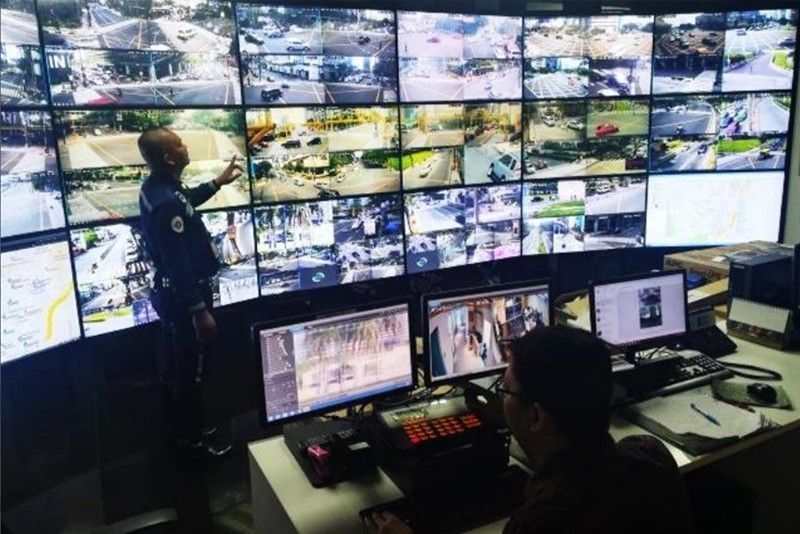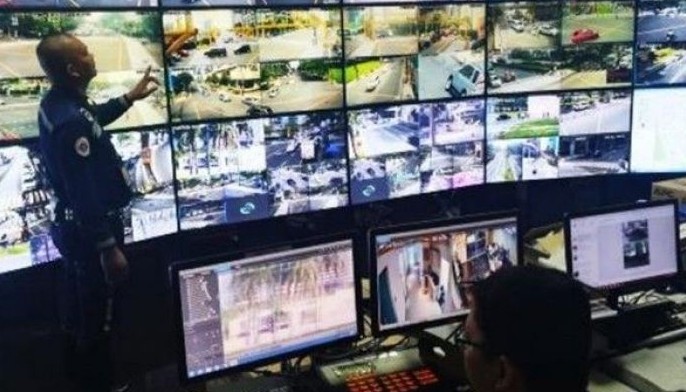DILG wants local governments to pass 'no CCTV, no business permit' ordinances

MANILA, Philippines — The Department of the Interior and Local Government urged cities and municipalities to enact ordinances requiring businesses with a lot customers and those in hazard-prone areas to install closed-circuit television (CCTV) systems.
In a statement sent to reporters, DILG Secretary Eduardo Año said that as people return to pre-pandemic practices, public safety must be a priority of LGUs and “CCTVs are applicable technologies that should be utilized to keep criminal activities and their perpetrators at bay.”
“This is the right time to require businesses to install CCTVs. People are going out of their homes and in various establishments nowadays due to lower COVID-19 cases and a CCTV system is a powerful tool that can aid LGUs in ensuring public safety, deterring crimes, and identifying and apprehending culprits,” Año said in mixed Filipino and English.
"The LGUs, particularly their Sanggunian, need to take the lead because [CCTVs] have contributed a lot to our fight against crime," he added.
In DILG Memorandum Circular No. 2022-060, Año said that among the establishments that should have CCTVs are financial establishments such as:
- banks, pawnshops, money lenders, and money remittance services and the like;
- business establishments with several branches and chains;
- shopping malls, shopping centers, supermarkets, wet markets;
- medical facilities such as hospitals, clinics, and laboratories.
- places of entertainment such as theaters, movie houses, perya, internet cafes, arcades and other areas that draw a considerable number of customers;
- airports, public transportation terminals, parking lots and other similar establishments that cater to a large number of vehicles;
- car dealerships, gasoline stations, vehicle maintenance/service stations;
- and other similar business establishments deemed necessary by the LGU should likewise have CCTV cameras.
“Business establishments can help a lot in maintaining order in their communities by prioritizing the installation of CCTVs in their businesses. We must work in synergy towards a more peaceful community, ”Año said.
Año said CCTV footage has always complemented the investigation of law enforcement units and has led to the resolution of many criminal cases. He said CCTVs aided in the investigation of high-profile cases producing vital leads for police investigators.
“We have already made significant strides in lowering the country’s crime rate in the last five years. It is imperative that we sustain this progress and enforce innovative policies that can further improve peace and order in our communities,” the DILG secretary said.
Whatever happened to Safe Philippines?
With the Interior chief's pronouncement, the local governments now have to carry the responsibility of implementing CCTVs across cities, too. But as it currently stands, local governments have already bore significant responsibility amid the coronavirus pandemic and the government's national vaccination program.
This isn't the first time the DILG, under the leadership of the former military general Ano, tried to push widespread CCTVs in local government units for the purpose of safety and security.
To recall, the Department of the Interior and Local Government awarded the Safe Philippines project to China International Telecommunication Construction Corporation to build and install the system in November 2018.
The project at the time sought to install some 10,000 security cameras across public areas in Metro Manila and Davao. The system will also be equipped with advanced features such as intelligent video analytics, facial and plate recognition and video content search.
The DILG also said in 2018 that the project was not primarily for surveilance and was simply an "integrated system to improve police response time as well as to deter and reduce crime."
But lawmakers held issue with the perceived security threat brought on by the China-owned and maintained systems.
Senate President Pro Tempore Ralph Recto said in 2018: "Don’t you think there is a security threat when China telecoms and Huawei will do surveillance system in Metro Manila?"
Upgraded CCTV specifications and location
DILG Undersecretary Jonathan Malaya said CCTV cameras must meet the upgraded guidelines set by the national government and the DILG.
“We encounter instances wherein audio or video quality make it hard to discern offenders, which is why we are urging the LGUs to set up upgraded CCTVs for the peace of mind of our fellow Filipinos,” he said.
As recommended by the Anti-Cybercrime Group of the Philippine National Police, an attached bureau under the DILG, the required CCTV cameras should have the minimum specifications of:
- a high-definition analog or at least a 2-megapixel digital camera;
- 0.1 Lux Minimum Illumination; 2.88mm to 3.6mm focal length;
- Auto Iris focus lens;
- 1/30s to 1/50,000s shutter speed;
- pan and tilt adjustment of 0 to 180 degrees and rotation adjustment of 0 to 360 degrees;
- and Vandall proof for outdoor cameras with IP 66 Weatherproof casing, among others.
For audio and video input, CCTV cameras must be hybrid type “that accepts both Analog and Digital signal” with a minimum of:
- four camera inputs;
- video and audio stream input;
- H.264 Video Compression and G.711u audio compression;
- and a hard disk drive storage system that can record 40 days for DVR with four cameras at 1080p.
- Meanwhile, 720p or 1080p resolution video/audio output; 3 FPS; and, at least 10 megabytes per second Video Bitrate and at least 64 kilobits Audio Bitrate are required for video and audio output.
Other specifications include a centralized power supply for the video recorder and cameras; and, an Uninterruptible Power Supply (UPS) to provide standard and reasonable back-up power for the Video Recorder and Cameras.
In terms of installation, cameras must be installed at a secure location with a maximum area of coverage of entrance and exits and areas of transaction or risk making certain that there are no blind spots.
Recommended recording distances should be 10 feet (3 meters) and above for general surveillance; 5 to 7 ft (1.5 to 2 m) for facial recognition; and 3 to 4 ft (1 to 1.2 m) for plate recognition in parking lots and must be mounted at secure or concealed locations to avoid deliberate tampering.
- Latest
- Trending






























